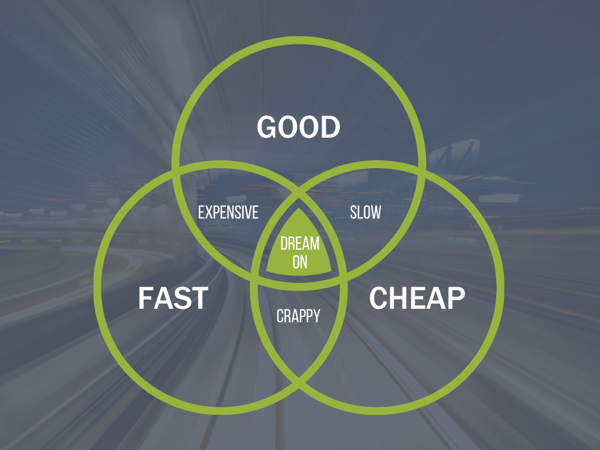After months of discovery calls, demos, scoping and evaluation, you selected SAP SuccessFactors to drive your business forward. Congrats, you have impeccable taste! All kidding aside, selecting the HR technology vendor is half the battle. Once you’ve overcome that hurdle, the next step is to implement the solution. Easier said than done, right?
Whether you embarked on this journey to simply automate your paper-based processes or have a larger, strategic initiative to invest in your employee experience, the best intentions for a successful implementation are there, however, there are times when you don’t know what you don’t know.
Luckily, we have assisted organizations like yours from the beginning of their SAP SuccessFactors implementations (and unfortunately, supported some who required a re-implementation) and have compiled this list of reasons why organizations fail to adopt SuccessFactors (or any HR technology for that matter), so you can avoid common pitfalls.
To be successful, you must recognize barriers and roadblocks that may arise as you begin your implementation, and we hope that this list helps you understand what to expect in the journey ahead.
#1) You Lack Strategy and Vision
The first reason organizations fail at adopting SuccessFactors is a lack of strategy and vision. When we say lack of strategy, we are not simply talking about an execution plan on how to get each module implemented as quickly as possible. We mean understanding and addressing the basic questions like why are we implementing this technology? What can it do for our business? What’s our approach to each module and/or how does each module piece together so we provide the best experience?
Many organizations are looking to solve an immediate need and they rush to implement the module that will solve that need (we get it, sometimes that’s the hand you’re dealt!). However, in doing so, this could set you up to fail. Organizations that rush through implementation could inadvertently cause re-work in the next phase of the implementation because they didn’t think things through from the beginning.
Here’s a classic example. Let’s say you don’t have an applicant tracking system (ATS) today (or the one you currently have is more painful to use than the old paper version you were using before). To alleviate that pain and put a Band-Aid on that wound, you immediately implement the Recruiting module, despite knowing you ultimately plan to roll out the full suite. While you may have a functioning ATS for now, when you go to implement Employee Central, you realize you didn’t consider the impact it would have on the Recruiting module. Now you must spend more time, money, and resources to re-configure Recruiting so you can leverage position data from Employee Central.
The takeaway here is to have a roadmap and be sure it includes your long-term vision so that you can understand the full impact of the decisions you’re making today.
#2) You Chose the Wrong Implementation Partner
Ever heard of the saying, “we have three kinds of services, good, fast, cheap, but you can only pick two?”

Good + Fast = Won’t Be Cheap | Fast + Cheap = Won’t Be Good | Cheap + Good = Won’t Be Fast
The SuccessFactors ecosystem is comprised of a vast array of implementation partners, each with their own unique spin on how they provide implementation services. Choosing the wrong implementation partner (for you) can be another barrier and reason you fail at implementing your SuccessFactors solution. This is a critical decision and one that should be made carefully. A good implementation partner can provide best practices and give insight into what other customers have done to solve similar problems to what you may be facing. They can bring many different experiences to your implementation and even give guidance on what modules to implement first, helping you with your strategy and roadmap.
When evaluating potential implementation partners, ask about the experience of the consultants who will be working with your organization. Understand where they excel and what they can bring to your project. Going back to the graphic above, every partner will do its best to meet your project criteria to earn your business. If they say they can do it fast and cheap, you need to recognize what you may be sacrificing.
Ask for references and talk to other customers who have used that partner for similar projects to see how they performed in a real implementation. However, have realistic expectations and be mindful of their client’s time (keep in mind, you could be providing references in the future!). Wait to ask for references when you’ve down selected the partner and are genuinely considering their services. It saves your time and their client’s time – and they will take the request more seriously.
Lastly, don’t base your decision on cost alone. It’s a given that budget is important but be sure you are taking the tips above into consideration along with cost when selecting your implementation partner; you are making an investment by implementing SuccessFactors, it’s critical to also invest in your partnership as both are long-term.
#3) You Didn’t Have the Proper Resources
Taking on a project such as SuccessFactors (or any integrated HR suite) is a significant endeavor; that means it is going to require time and commitment from you and your team. In most cases, organizations can’t afford to assign members to the project team full time (we know, everyone still has a day job!). However, it’s important to understand when members of your team are going to be needed in greater capacity than others, so time is a factor.
Having the “proper resources” doesn’t mean the number of folks you can dedicate to the implementation team; quality resources who have process knowledge is critical. Here are the recommended roles for a project team – one team member may serve multiple roles:

Having the right people on your team is key to success, and if the end goal is an integrated suite, be sure you have a cross-functional team when implementing every module.
Here’s another example, keeping in line with the previous Recruiting & Employee Central track. Let’s assume you are implementing Employee Central and Position Management. You need a team who understands the HR data, that’s a given. But what about the people who work with that data every day, like your Talent Acquisition team? What data is important to them? What would they need to be able to use in Recruiting? Having a cross-functional team can contribute to success by helping you think outside of a silo (Employee Central alone) and contribute to setting up your future implementations for success.
#4) You Didn’t Gain Employee Buy-In and Have No Communication Plan
Many organizations have the right people on the team, have an experienced implementation partner and everyone is aligned with the overall strategy and roadmap. You’re prepared right? Almost. While you may think you have everything in order, what about facilitating the roll-out and communication plan to the rest of the organization and gaining buy-in from employees?
This single aspect can make or break an entire implementation. Sure, you have a system that works, and your team is excited about this accomplishment, but if no one adopts the system or understands the value proposition, you’ve failed. It takes time for humans to adapt to change, even a good change. Most of us don’t look forward to change, it disrupts our routines and decreases productivity (initially), which is why a communication plan is important. Let employees know what is coming, how it will benefit them, and the positive impact it will provide.
Share the benefits of what SuccessFactors will bring to your organization prior to kicking off the project and don’t let up! For employees, it may be sharing the vision of an internal career site where jobs are posted before being opened to external candidates. It may be how the Succession Planning tool will help your team be prepared to fill critical roles quickly and prepare someone internally to step in when the time comes. Perhaps it is how new automation will help the recruitment team get through the paperwork and tasks that come along with the job so they can spend more time recruiting and sourcing for the organization.
Whatever that “value proposition” might be for each member of your organization, help them realize it through your communication plan so they are also invested in the success of this new platform.
#5) You Didn’t Plan for Long Term Maintenance
This last one may be the biggest and reason we see so many organizations struggle, and in the end, fail at adoption. Even after doing everything right - from having a sound strategy and roadmap to proper resources, having an experienced implementation partner, and buy-in from the entire organization, you can still fail. Yes, you heard that right!
It’s not enough to have a good initial implementation (of course we all want that) but it is imperative that you have a plan for daily administration and maintenance for SuccessFactors after you are live. The partner team has rolled off your project, and your internal implementation team will eventually go back to their typical full-time responsibilities, so who will be responsible for the system moving forward?
No matter how much automation was put in place and how well integrated your modules may be, every HR platform, including SuccessFactors, requires resources to maintain it. Let us be clear, you will need at least one person (maybe more depending on the size of your organization and your SuccessFactors footprint) dedicated full-time to the daily administration and maintenance of this tool. As a former SuccessFactors system administrator, I can tell you from experience how critical this role is to your success.
SuccessFactors is updated with new features and product deprecations twice a year. Someone needs to understand what those changes are and how they will impact your organization. Will you enable those new features, and if not, what are the ramifications? There will be times SuccessFactors features will be pushed without the choice on whether to adopt them or not. Will you find out when it’s too late? It’s better to have someone own the system and stay ahead of what’s coming so you can be prepared.
Up until now, you’ve invested time, money, and resources to get the system live. Why would you stop short? We often describe making an HR technology purchase to buying an elephant. Many people fail to recognize that once you have an elephant, what it takes to care for and feed it. Similarly, with SuccessFactors, you need someone to continue to manage the on-going innovation and continue to feed your organization with the latest and greatest. Otherwise, you run the risk of falling behind.
By keeping these five aspects in mind, you'll not only guarantee a successful implementation, but ensure that your organization will embrace the new technology. By having a clear vision, aligning the right resources internally and externally, communicating your plan to the entire organization and identifying how to manage your investment after go-live, you'll set your team and organization up for a repeatable process as you embark on implementation now and beyond.





